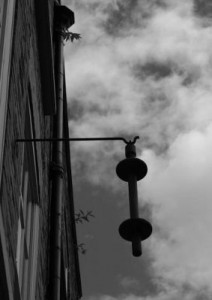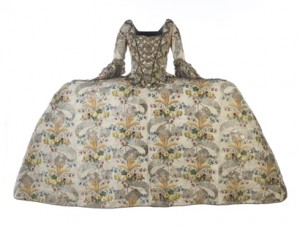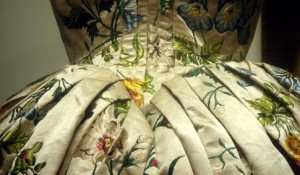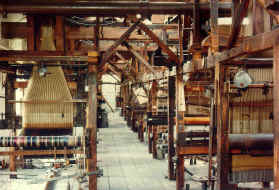
The British textile industry, chances are, never would have reached its former pre-offshoring movement glory if it was not for immigrants.
Indeed you read quite rightly. In fact, if it had not been for the Huguenot influence on silk weaving – and by means of cross-fertilisation, cotton and wool – the industry would have served a pure domestic purpose for the 18th, 19th and first half of the 20th century. Far from being an expection therewith, what is the case with textiles is as much the case with clock making, pottery, silver and gold smithing or gun making for that matter, to just name a few.
The 18th and 19th century’s silk manufacturer in Derby all descended from Huguenots, as do the factories still remaining in Sudbury, Suffolk. These textile hubs – as did others further up North – came into being when the 3rd and 4th generation Huguenots had enough of the legal and other regulations imposed on them by London, its guilds and merchants, and escaped to more liberal areas.
And while London’s East End already was a weavers’ neighbourhood, and remains a hub of London’s modern fashion scene, too – it was the Huguenots that really brought the area into the consciousness of London’s merchants, politicians, and even British nobless and royalty. In their time, these French speaking immigrants opened Britain’s door to world trade. Suddently, ‘Made in England’ was understood to be the same seal of quality that previously only ‘Made in France’ had guaranteed.
And this for good reason: Many of the same people that had warranted the quality of their craft previously at the French royal court of Louis XIV found themselves thrown by the torments of historic decision living a new life as citizens of London.
Video: A peek inside Dennis Severs House. Dennis Severs is an American artists that in the 1970 bought a former Huguenot weaver house in Spitalfield, and ‘returned’ it to its former state. Now, when visiting, it is in a state as if the weaver’s family had just briefly popped out and expected to return any moment.
But who where these weavers and other craftsmen, and why had they come to London of all places?

The Huguenots were, simplified, French Protestants.
The position of Protestants in France – a Catholic country – had always been difficult from the beginnings of the reformation throughout the 16th and 17th Centuries. Thanks to the Edict of Nantes they were tolerated if not appreciated. But then in 1685, King Louis IX revoked the Edict of Nantes. Hence, without the Edict, which had granted Protestants the freedom to worship in specified areas, their lives now suddently were in danger, and for many emmigration was their way to freedom. And subsequently possibly history’s first document ‘brain drain’ drained France of some of its most skilled craftsman and makers.

Throughout the 17th century some Protestants had already flet to England, although it never was quite clear what the English King’s position or sympathies exactly were. However, in 1681 Charles II of England offered sanctuary to the Huguenots. Until the early 16 hunders, only around 15’000 people had fled to England, but then between 1670 and 1710, between 40,000 and 50,000 Huguenots from all walks of life sought refuge in England.
Many of these came to London, settling in the East of the city – Spitalfield – where living costs were lower, and the control of guilds on trade was less stringent. And among these refugees there were good numbers of highly skilled craftsman – of all trades – among the King Louis’ principle gun maker, and his clock maker and his silver smith.
French silks was at the time the trend of the day and – unsurpringly – French weavers not only found an immediate market for their skills and products, but beyond that found themselves suddently trading for good furtune with the Americas.
And suddently ‘Made in Britain’ was of such good stand with the wealthy in Europe and the Americas that forgeries – of guns, of silks, of clocks – started to seep into the market.
… but it didn’t last …
In the late 18th century prices for silk started to decline severely, and with it came a period of political unrest and upheaval in London. Weavers started to protest against imports of cotton and foreign silk. Violent disturbances caused by disputes between the silk masters and their journeymen (workers) over wages, led to the passage of the so-called “Spitalfield Acts” of 1773 and 1792, which fixed the wages of silk workers in the Spitalfields area. But such measures were desperate and really only provided some temporary relieve to the weavers plight. However in the long term, the effect of these Acts was to distort the market against the interests of the weavers, and the trend was clear:
Within short time there were no import restrictions, no duties imposed anymore, and the trade facing the harsh realities of international competition.

People of the silk trade, including highly skilled weavers, moved to Essex, Derby, and Macclesfield – areas where always small silk communities had existed, but where thanks to modern innovation silk was increasingly manufactured in mechanized factories on Jacquard looms rather than by cottage-based craft workers.
Essex, Macclesfield and Derby went on to be centres of the silk trade when the industrial revolution was in full gear. And just as London before, from the mid 19th century onwards, slowly declined into cities that are still stepped in textile history. Different to London though, they are still waiting for being dealt a new lucky hand in the card game of global trade.

